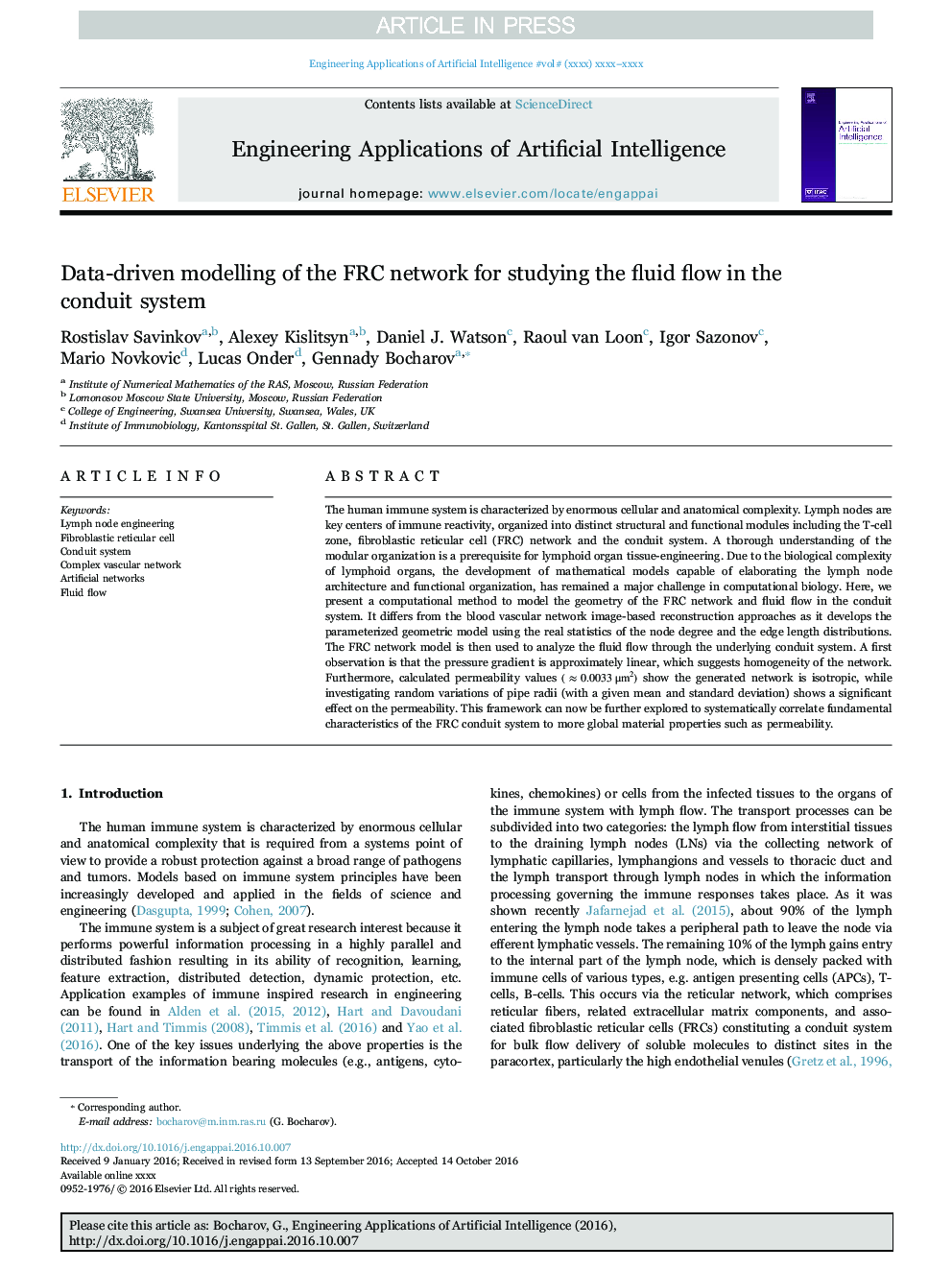| Article ID | Journal | Published Year | Pages | File Type |
|---|---|---|---|---|
| 4942756 | Engineering Applications of Artificial Intelligence | 2017 | 9 Pages |
Abstract
The human immune system is characterized by enormous cellular and anatomical complexity. Lymph nodes are key centers of immune reactivity, organized into distinct structural and functional modules including the T-cell zone, fibroblastic reticular cell (FRC) network and the conduit system. A thorough understanding of the modular organization is a prerequisite for lymphoid organ tissue-engineering. Due to the biological complexity of lymphoid organs, the development of mathematical models capable of elaborating the lymph node architecture and functional organization, has remained a major challenge in computational biology. Here, we present a computational method to model the geometry of the FRC network and fluid flow in the conduit system. It differs from the blood vascular network image-based reconstruction approaches as it develops the parameterized geometric model using the real statistics of the node degree and the edge length distributions. The FRC network model is then used to analyze the fluid flow through the underlying conduit system. A first observation is that the pressure gradient is approximately linear, which suggests homogeneity of the network. Furthermore, calculated permeability values (â0.0033μm2) show the generated network is isotropic, while investigating random variations of pipe radii (with a given mean and standard deviation) shows a significant effect on the permeability. This framework can now be further explored to systematically correlate fundamental characteristics of the FRC conduit system to more global material properties such as permeability.
Related Topics
Physical Sciences and Engineering
Computer Science
Artificial Intelligence
Authors
Rostislav Savinkov, Alexey Kislitsyn, Daniel J. Watson, Raoul van Loon, Igor Sazonov, Mario Novkovic, Lucas Onder, Gennady Bocharov,
